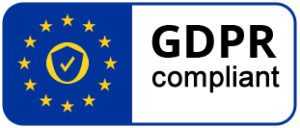14 Dec 2020 2020 and 2021 outlook
Despite COVID-19, Eurosmart confirms the resilience of worldwide shipment of secure elements
General disclaimer
The COVID-19 crisis brought deep uncertainty to the global economy. Therefore, forecast figures at the time of publication are exceptionally uncertain. Even if the potential impacts of the second wave remain to be seen, the digital security industry managed to be resilient. Eurosmart will review the market and secure element segments in Q2 2021. In such circumstances, the signals of 2021 recovery are correlated to the development of the pandemic. For most of the segments, Eurosmart has identified a rebound whose significance shall be monitored in the coming months. In some segments, the crisis had a positive impact that led, for instance, to increased connectivity demand and widespread adoption of contactless payment solutions.
Financial Services
In 2020, COVID-19 and mobile POS expansion led to increased adoption of contactless payments, raising the overall contactless payment cards market share to 67% of the total of smart payment cards produced over the year. The transaction limit for contactless payments has been raised in at least 60 countries, and marketing campaigns have been promoting this type of payments also as a mean to reduce health risks. In parallel, implementation of mobile POS has driven contactless card adoption, particularly in countries where current POS infrastructure was not sufficient. The COVID crisis unleashed new consumer habits and enabled historical records of contactless payment transactions.
Despite this increase in contactless payment usage and contactless card issuance, overall payment card shipments contracted in 2020 versus the previous year. If partially expected, as 2020 was a lower year in the issuance cycle following a very strong 2019 (see Jun 10th 2020 PR), the 2019-2020 drop has nevertheless been intensified by the Covid-19, even though it was limited compared to other markets. The COVID impact has been observed mainly on the credit card, and the retail and airlines co-branded card markets.
The pandemic has also accelerated the adoption of mobile payment solutions, that rely on card infrastructure and support card issuance, and for which digital companies, smartphone OEMs and Fintech are also supporting the stronger demand in contactless products. They have all been providing physical cards and security solutions to meet consumer needs.
In 2021, Eurosmart forecasts an increased demand of payment cards close to 2%, supported by a continuous growth of contactless card issuance, whose market share is estimated to surpass 70%. The overall payment card market is expected to show a sustainable development of a similar level over the coming years. Moreover, Eurosmart welcomes the EPI, which will be providing new European payment schemes and potentially bring new dynamics to the market.
Telecom
In 2020, COVID-19 led to an increased demand in connectivity. The global coronavirus pandemic has profoundly affected the way digital is impacting our lives. Due to the limitation of physical interactions, contact between devices, digital tools and services enabled new types of personal and professional exchanges. The current crisis led to an even stronger and faster trend for digitalisation of business and private communication with cellular technology, along with the generalisation of digital conferences. Thus, many connected devices (notebooks / tablets) were needed to adjust to home office and home schooling. However, an overall decrease in demand for devices is expected for the telecommunication sector as the pandemic directly impacts mobile phone shipments and modifies consumers’ buying behaviour through different product mixes, extended smartphone renewal cycles and closings of the main issuance channels -mostly in prepaid countries. For 2020, Eurosmart confirms a slightly lower demand.
The embedded UICC is expected to grow further beyond 2020: key handset makers continue to extend eSIM support deeper in their portfolio of smartphones, and even tablets and smartwatches.
In 2021, Eurosmart forecasts a slight recovery of the demand with a growth of at least 1% compared to 2020. This is driven by an expected recovery of Smartphone sales. The embedded UICC will reach a significant double-digit growth.
Device Manufacturers
In 2020, Mobile payments, wallets and wearables have been showing a continuing growth. Sales of embedded secure elements depend on the depth of the pandemic crisis that currently impacts mobile phones demand and consumer spending behaviours. Eurosmart expects a drop in shipments with some uncertainty coming from the current economic and sanitary concerns.
Q3 2020 showed quite strong rebounds; the Q4 dynamics remains uncertain and strongly dependent on the impact of the second wave. Moreover, in the last quarters, some supply chains have been significantly impacted in OEM and retail industry.
A flat or slightly growing trend is forecasted for 2021. This segment is driven by a contact-free preference for payments. This trend is expected to continue, as consumer behaviour evolves progressively towards a higher usage of mobile payment methods across different consumer devices (i.e. smartphones and wearables…).
Government
The contactless share in the government sector is expected to progress during 2020 slightly. However, the pandemic has degraded the overall demand in ePassport and ID documents. This decline is mainly due to deteriorated capability and willingness to travel during the last months.
Since the beginning of the pandemic, the operation of governmental services has been disrupted, meaning that enrolment and renewal of ID documents have been slowed down. The reopening of these services remains very slow.
Eurosmart foresees a decline in demand for 2020, and 2021 still remains uncertain. But, even if the absolute volume of contactless passport is decreasing, most of the new projects will be contactless. In Europe, contactless for passport is no more a feature but a requirement.
The future trend of this segment depends on the lifting of travel restrictions and the functioning of governmental services. And the perspective of a vaccine can indicate a signal of mid-term recovery.
Industrial and automotive IoT
The market is driven by a push for connectivity and embedded security in the automotive sector and other industrial segments. Shipments of secure elements for connected cars and smart meters using cellular connectivity are estimated to reach a 3% growth. The sector has been highly, but temporarily, impacted by production shutdowns and inability to install meters due to lockdowns.
In 2021, while long term growth is likely to continue, shipments will depend on the resilience or recovery of particular industry segments.
Eurosmart estimated WW µP TAM – (Mu)
| 2020 forecasts | 2021 forecasts | ||
|---|---|---|---|
| Telecom* | 4900 | 4950 – 5000 | |
| Financial services | 3200 | 3250 | |
| Government- Healthcare | 400 – 460 | 420 – 500 | |
| Device manufacturers** | 430 – 450 | 450 – 480 | |
| Transport | 250 | 250 – 270 | |
| Pay TV | 80 | 70 | |
| Others*** | 91 | 91 |
* MNOs (secure element with a SIM application)
** Device manufacturers represent Original Equipment Manufacturers of mobile phones, tablets, navigation devices, wearables and other connected devices without SIM application (Embedded Secure Element without SIM application)
*** Others include physical and logical access.
Eurosmart estimated WW µP TAM – (Mu) Contactless
| 2020 forecasts | 2021 forecasts | |
|---|---|---|
| Financial services | 2150 | 2300 |
| Government Healthcare | Too uncertain to forecast | Too uncertain to forecast |
| Transport | 250 | 250 – 270 |
Eurosmart estimated WW µP TAM – (Mu) Industrial IoT
| 2020 forecasts | 2021 forecasts | |
|---|---|---|
| Industrial IoT * | 135 | 160 |
*Industrial IoT: SIMs, eUICC, M2M form
2020_01_Eurosmart_MarketForecasts


